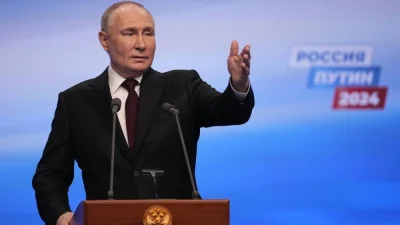The move would extend a measure designed to correct historic social and economic discrimination among so-called lower castes to people who earn as much as $11,500 per year, roughly six times India’s per capita income of about $1,950.
It also comes after a number of stunning setbacks for Modi’s ruling Bharatiya Janata Party.
But where are the jobs?
Questions for long have been raised about Modi’s ability to fulfil his 10mn-jobs-a-year campaign pledge with just months to go for the re-election. He is now facing an uphill task to address what is seen as his government’s biggest failing: Job creation.
While the administration touts the formalisation of millions of jobs, private sector research suggests India is experiencing jobless growth and failing to create high-quality employment.
India will have the world’s biggest labour force by 2027. However fresh employment opportunities are scarce and the administration has lagged in training workers to help them survive the threat of automation.
The government estimates the country will need an extra 110mn workers across the sectors by 2022 compared with the 105mn who will enter the workforce.
But the gap is wide, according to a September 2017 Bloomberg report.
India’s working age group of 15-59 years accounts for 62% of the total population, while its average age of population by 2020 will be 29 years compared with 40 in the US and 46 in Europe. Only 5% of the people in India, however, possess formal skills against 68% in the UK, 75% in Germany, 52% in the US and as high as 80% in Japan.
India has a gargantuan task of skilling 400mn workers/jobseekers by 2022.
To be fair, India’s demographics are generally considered better than China’s. India, at the same time, is also seen as a laggard in productivity. Of the potential global oversupply of 90mn low-skilled workers in 2020, 27mn will be in India, according to the McKinsey Global Institute.
India needs to consistently grow above 8%-9% to provide enough jobs for what will be the world’s biggest workforce, and some of the country’s best economic phases came when its society was most open, says Raghuram Rajan, the former governor of the Reserve Bank of India.
But here’s the catch.
The country risks being pushed into a crisis if the government sacrifices macroeconomic stability for growth, according to economists including International Monetary Fund chief economist Gita Gopinath and Rajan.
To achieve macroeconomic stability, the nation needs to maintain low and stable inflation, ensure combined government budget deficit leaves room for private investment and keep a check on external-financing requirement, they said in a report last month.
Longer term, India’s policy makers need to learn from mistakes committed in the past. The shallow, short-term economic thinking should give way to a sustainable, futuristic growth vision to create jobs, lift millions of Indians out of poverty and ensure social inclusion.



